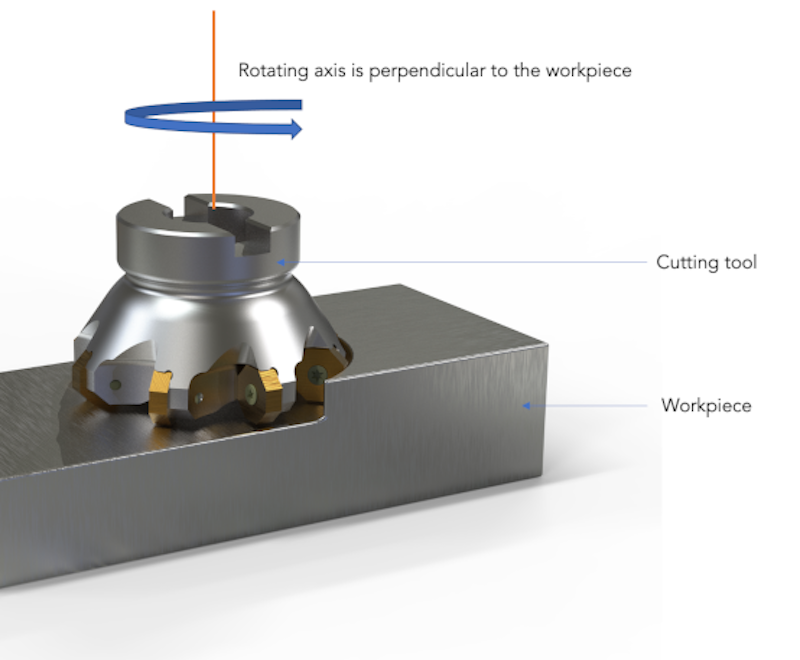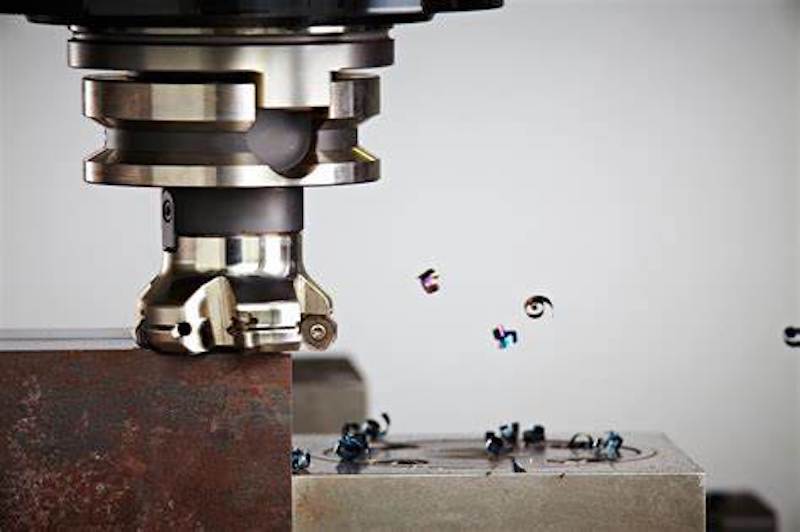The face milling process is significant in the area of precision and efficiency in mechanics. Gaining an understanding of face milling, from its definition to useful hints, may significantly enhance mechanical performance. This essay delves further into this procedure, dissecting its intricacies and offering insightful knowledge to both inexperienced and seasoned mechanics.
Face Milling: Deep definition
Face CNC milling, at its core, is a mechanical process aimed at producing flat surfaces on a workpiece. Unlike other milling techniques, this one is focused at the highest level, resulting in smoothness and even precision. The process requires the use of specialized equipment, usually a multi-cut front saw. This method allows for more efficient removal, making face milling indispensable in various industries.
Technological advances have fueled the advancement of face milling, enabling machinists to achieve unprecedented accuracy and speed. From traditional hand milling to modern computer-controlled CNC machines, the journey of face milling reflects the constant pursuit of perfection in rapid manufacturing.
Face Milling Process Step-by-step dissection
Equipment selection: The journey begins with the careful selection of the right equipment. A front pocket with inserts designed to make a good cut is essential to achieve the desired result.
Work item repair: Ensuring that the work is properly packaged and organized is paramount. Any twist during this period can compromise the integrity of the final product.
Installation of Milling Machine: The cutting speed, feed rate and depth of cut are set to ensure the accuracy of the milling machine. Precision in these situations is crucial for a successful facial massage.
Execution of Face Milling Operation: Once the setting is completed, the face milling operation starts. Rotating shears on the front mill interact with the work, removing material and flattening it.
Quality control: Performs post-rolls, thoroughly inspects, and measures finished products to ensure conformance. Quality control is the last check in the forward milling process.
Differences in face milling techniques
Although face milling shares similarities with other milling techniques, its unique characteristics set it apart. Unlike end milling, which focuses on creating features such as slots and pockets, face milling prioritizes the generation of flat surfaces. This fundamental difference makes face milling ideal where surface finish is required, such as components for automotive, aerospace and industrial applications.
Additionally, the benefits of face milling extend beyond the unique placement. The process makes it more efficient, as large areas of the work can be machined at one time. However, it is important to acknowledge limitations, such as the challenge of handling complexity compared to other methods, such as end milling.
Practical tips for effective face milling
Getting the best results from face milling requires more than just technical skills. Technicians need to consider a variety of factors, starting with choosing the right equipment. Materials play an important role in affecting tool geometry and cutting speed. In addition, an understanding of the relationship between feed rate, speed and depth of cut is essential to maximize efficiency and reduce tool damage.

Dealing with the challenges often encountered during face milling requires a clever approach. Adjusting feed rates and speeds, optimizing equipment geometry, and using efficient cooling methods are key troubleshooting steps. Successful engineers often rely on a combination of technical expertise and practical experience to tackle these challenges seamlessly.
Case studies and examples: Focuses on the versatility and impact of face milling
Dive into the rich tapestry of real-world applications, and you’ll find plenty of examples where face milling remains a staple, demonstrating its unparalleled versatility and high effectiveness. The precise things to do for life-saving medical devices appear in the puzzle of face-milling production perfection as a keystone.
In the realm of high-performance engines, front grinding demonstrates its prowess with incredibly resilient components. The indelible mark left by face milling echoes across industry corridors and is a testament to its ability to change its impact across industries.
Success stories from these applications go beyond mere anecdotes; They become powerful tales that emphasize the critical importance of mastering the techniques of face milling. These stories are not just about creating error-free pages but about refining the story of automation. Front grinding has a transformative ability not only to improve product quality but also to improve manufacturing efficiency.
From the delicate precision needed for medical breakthroughs to the rigorous demand for high-performance technologies, face milling weaves into the automation of new textiles. These examples stand as a beacon, providing a way engineers can use it to illuminate their intricate craft.
Question and answer section:

What is the main purpose of face milling?
The main purpose of this particular form of milling is to flatten the workpiece.
How does front milling differ from end milling?
While CNC machining end milling is geared toward creating features such as slots and pockets, front milling focuses only on flat surfaces.
What are the main things to consider when choosing face milling tools?
When choosing face milling tools, several important factors must be carefully considered to ensure the proper functioning of the machine. First, materials play an important role, as different materials require precise cutting tools and coatings for efficient and accurate results. Tool geometry is an important innovation, and factors such as cutting rate, rake angle, and helix angle affect the tool's ability to remove material effectively.
The cutting speed and feed rate must match the tool and the material and ensure mechanization. Furthermore, the tool diameter and width considered in terms of workpiece size and surface area are critical to achieving the desired surface and shape accuracy. As the milling process is complex, machine tools and work, including holding, also affect the performance of the tool. Finally, the considered costs and expected life of the equipment should be examined to determine the overall economic benefit of an angle grinder selected for a particular application.
How can the common problems encountered during facial reconstruction be solved?
Typical issues include wearing the device and discussion. The solution changes the feed rate, speed, and device geometry.
Are there any specific safety precautions that must be followed when manufacturing frontal locks?
Yes, it is important to wear the right protective equipment and follow device safety guidelines.
Conclusion
In summary, face milling is a fundamental technique in mechanical engineering that offers accuracy and productivity. This article has provided insight into the intricate world of facial piercings, including everything from intricate terminology and architecture to comprehending the variations and useful advice. Automation can not only provide error-free goods but also take mechanical engineering and science to new heights by perfecting this approach. Let's start the face milling process and transform the unprocessed materials into expertly designed works of art.
TEAM MFG applies CNC machining in rapid prototype services, low volume manufacturing to meet your needs. Contact us today!





















